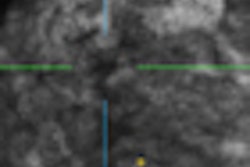Monday, November 26 | 12:15 p.m.-12:45 p.m. | LL-BRS-MO4A | Lakeside Learning Center
Women with personal histories of breast cancer can return to screening breast exams 10 years after their initial cancer diagnosis due to low likelihood of recurring cancer after this follow-up period, according to a poster presentation to be given on Monday.Researchers at MD Anderson Cancer Center examined the incidence and timing of recurrent breast cancer according to tumor type in women with a personal history of the disease. Dr. Ana Paula Benveniste and colleagues conducted a retrospective database review of 212 women diagnosed with a second breast cancer between January 2006 and December 2010.
The team analyzed each woman's histopathology, identifying tumor biomarker status (estrogen receptor, progesterone receptor, and human epidermal growth factor receptor 2 [HER2]), the imaging features of the second cancer, and the time between the two cancer occurrences.
Benveniste's group found that second breast cancers appeared sooner in patients with triple-negative primary breast cancer, compared with women with estrogen-receptor-positive primary cancer. But the team also found that in all groups, almost all of the second breast cancers were evident by 10 years of follow-up -- leading the researchers to conclude that women with a personal history of breast cancer can return to a protocol of screening mammograms 10 years after their initial cancer diagnosis.




















